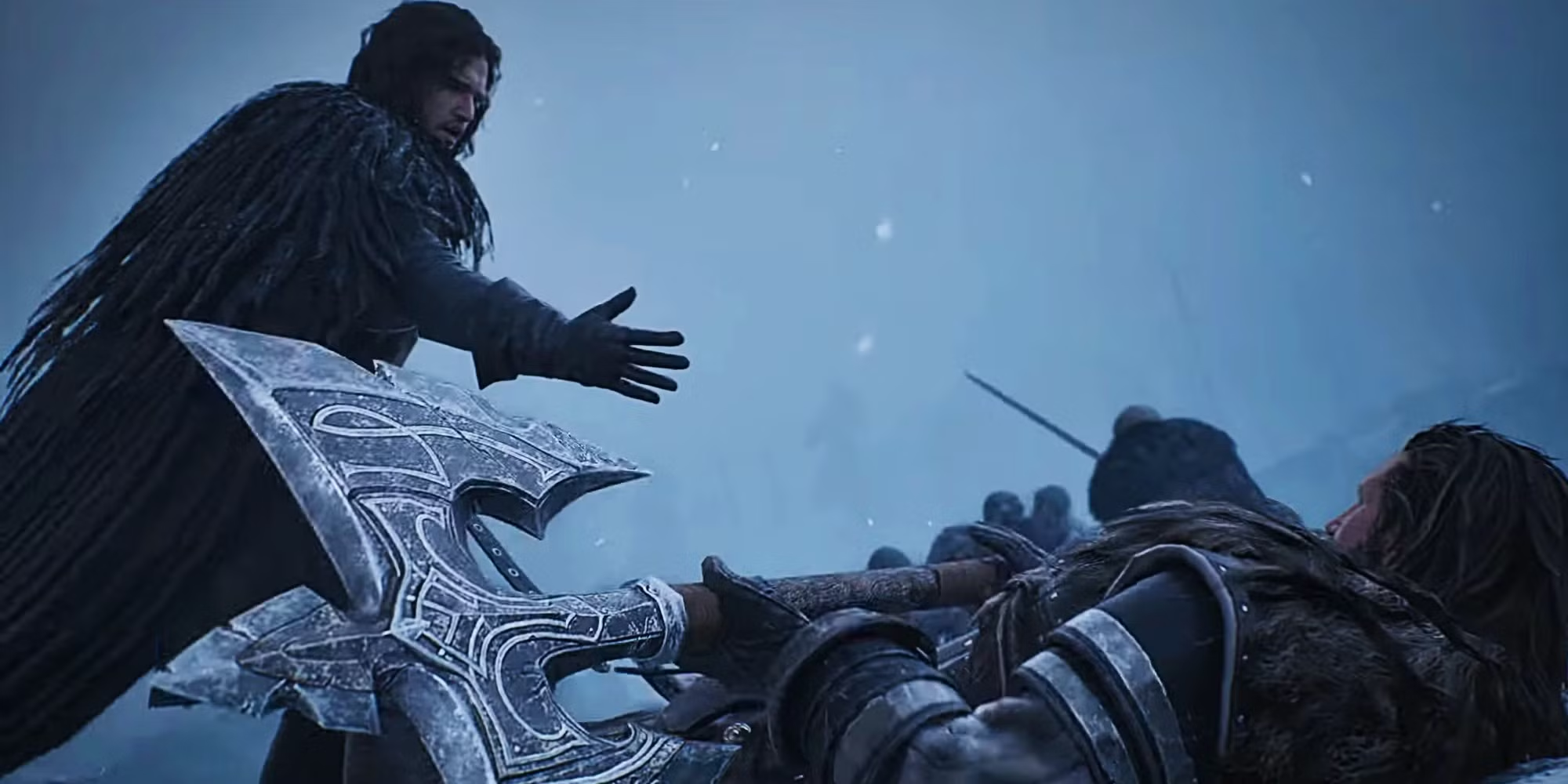Did you know that for centuries in Westeros, no woman was ever allowed to sit on the Iron Throne? This should come as no surprise to anyone who hacked it through even one of Game of Thrones’ seven seasons… and yet its prequel series, House of the Dragon, misses no opportunity to remind us just how much everything sucks for women in this world. I only wish it had something new to say.
House of the Dragon, which premiered its 10-episode debut season Sunday, takes place 172 years before Daenerys Targaryen’s birth and explores her family’s sordid history. (Does anyone in Westeros have an even somewhat normal family tree?) Specifically, we’re here to explore a civil war—the poetically named Dance of the Dragons—sown by the usual Westerosi blend of oppression, betrayal, and inflamed egos.
Succession might have become HBO’s poster child for family dysfunction, but lest we forget, even the Roys have nothing on the ruling families of the Seven Kingdoms.
Warning: Some spoilers ahead from the premiere of House of the Dragon and the George R.R. Martin books it is based on.
Although House of the Dragon revolves around a war of succession, however, we begin with a seemingly smaller conflict—the erosion of a best friendship. Rhaenyra Targaryen, Dany’s distant ancestor, faces an incomprehensible tragedy when her father, King Viserys I, sacrifices his wife (her mother) during childbirth in the hopes of securing a male heir. The baby dies, but, as book readers already know, the greater tragedy might be what happens afterward: The teen’s father, wracked with grief and under pressure to keep trying for a son, begins pursuing her best friend, Alicent Hightower.
This friendship’s erosion is both personal and political. Viserys names his daughter as his successor—skipping over his own brother, the poisonous Daemon (Matt Smith) in the process. But this new relationship with Alicent immediately challenges Rhaenyra’s claim to the throne; after all, as we keep hearing, the Westerosi public remains very invested in keeping dudes in charge.
As interested as House of the Dragon might want to seem in portraying how Westeros treats its women, its steadfast refusal to explore the contours of Rhaenyra and Alicent’s fractured relationship speaks volumes. Like its predecessor, this series grounds its dramatic stakes in the deadly political games at hand—often at the expense of its characters’ emotional development. Time jump after time jump hurls us through snapshot-like stages of Rhaenyra and Alicent’s foundering friendship, but it’s often impossible to tell how they moved from one dynamic to the next. Case in point: If you’re going to have a teen’s best friend in a relationship with her father, you’d think we might see the girls talk about that awkwardness in depth at least once. Alas, no dice.
At its most reductive, House of the Dragon throws its female characters into neat archetypes much like early seasons of Game of Thrones did. Back then, we had Arya the spunky “strong female character” and Sansa, the girly whiner; now, we have Rhaenyra, the heedless disruptor, and Alicent, the pragmatist. It remains a given that neither of them, regardless of their approach, will ever hold real power.
Consider the fates of women who dared to seize power for themselves in Game of Thrones. Cersei, the only woman to sit on the Iron Throne in Westeros’s history, met her end alongside her brother not long after she took power. Dany pivoted to genocidal wrath in Season 7, so Jon Snow euthanized her with his sword. Sansa at least became Queen of the North, but only after she endured enough on-screen torture to qualify as a martyr—and even then, she lost out on the Iron Throne to her utterly forgettable younger brother. And don’t even get me started on what happened to Margaery Tyrell.
Given how scant the source material for House of the Dragon really is—it’s based on one portion of the novel Fire & Blood—it seems there should have been room to explore more of the emotional complexity between Rhaenyra and Alicent. Instead, we’re asked to take their falling out as a given—the inevitable result of two women vying for power in a system that will never grant it to either of them. It’s not unbelievable, but it is reductive and conspicuously lazy.
A chief focus of the discourse leading up to House of the Dragon’s release has been the show’s relationship with sexual violence. Game of Thrones consistently attracted controversy with its displays of sexual assault—especially Daenerys’ marital rape scene in the show’s pilot and Sansa’s rape by Ramsay Bolton in Season 5.
As director Miguel Sapochnik previously indicated, sexual violence doesn’t seem to play as large a role in House of the Dragon—at least, as long as you don’t count marrying teenage girls off to men the same age as their fathers or sacrificing pregnant women in favor of their unborn children. (In the latter case, I can assure you the results are just as visceral as any rape scene.)
Just as with Game of Thrones’ wrenching depictions of assault and misogyny, I found myself watching the atrocities laid upon women of House of the Dragon and wondering whom this was all meant to entertain. If the goal, instead, is to enlighten—to awaken audiences to the cruelties women faced in real-life medieval times and draw parallels to our current age—then it might’ve helped to get to know these women and their relationships with one another on a deeper level.
It’s not that these women should all be best friends; I’d take a complex frenemy-ship over an uncomplicated friendship any day. Alas, there’s just not enough emotional intensity here to bring any real heat.




















![[Book Review] The Blade Itself (The First Law Trilogy) by Joe Abercrombie](https://bendthekneegot.com/wp-content/uploads/2018/01/1516047103_maxresdefault-218x150.jpg)
















